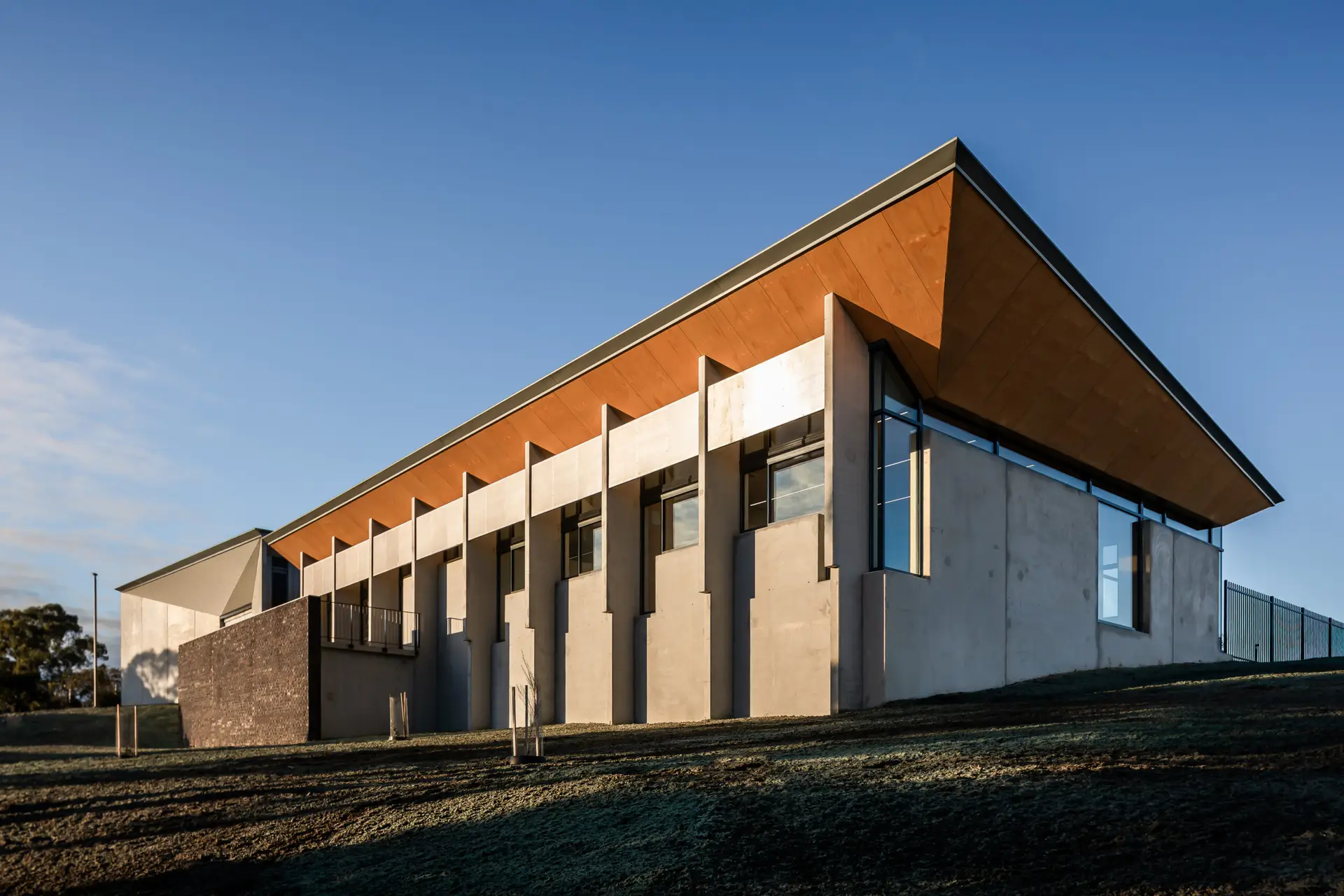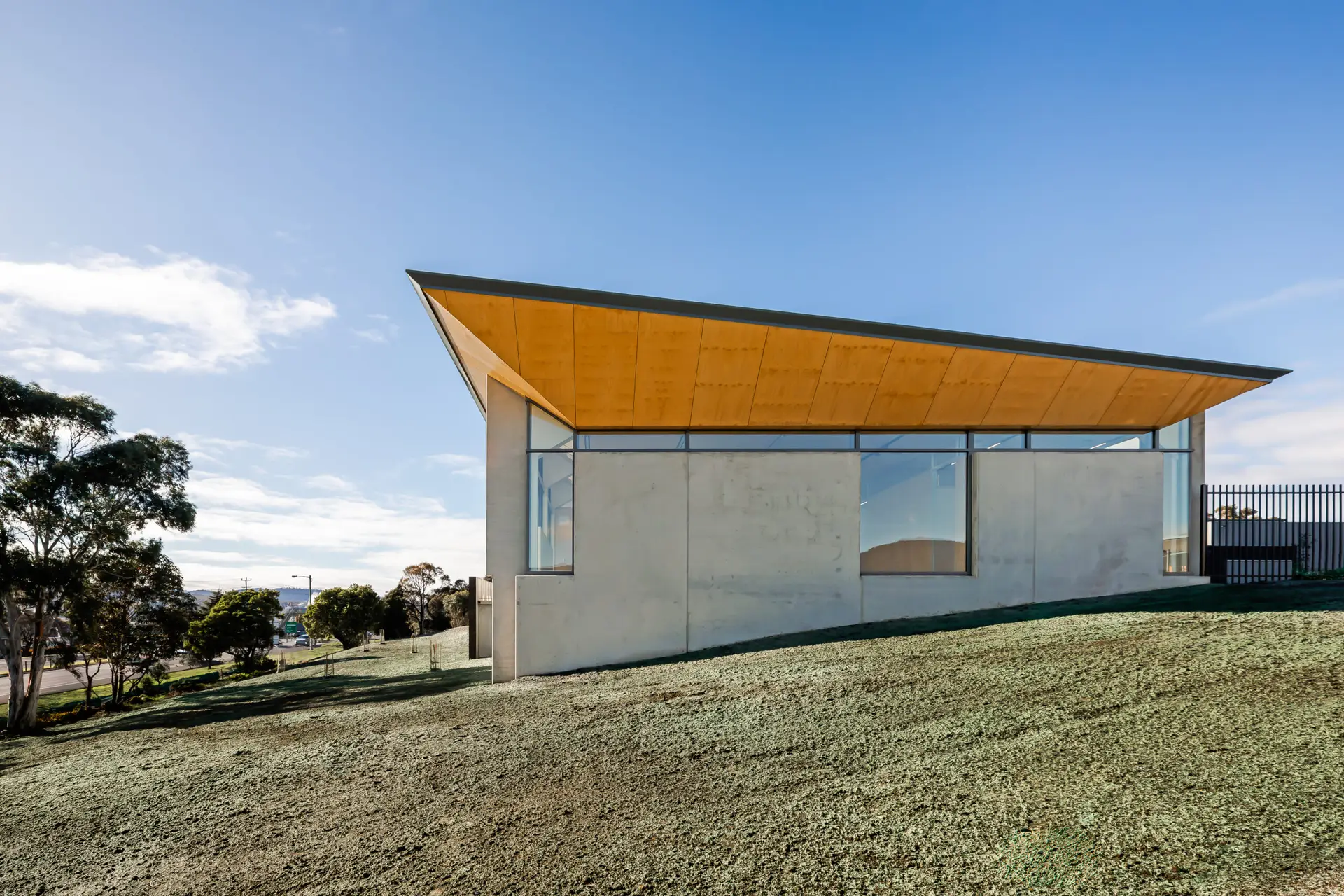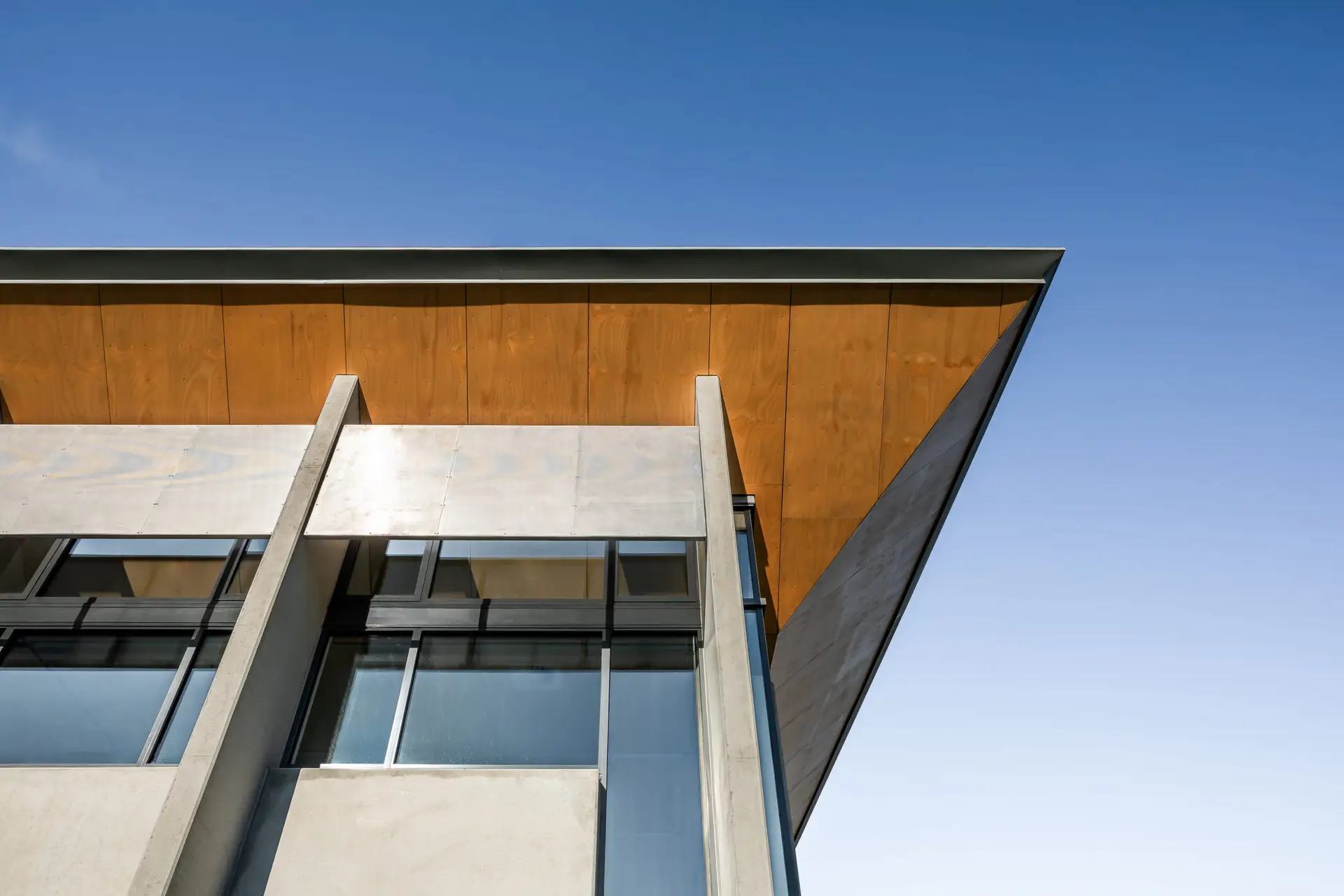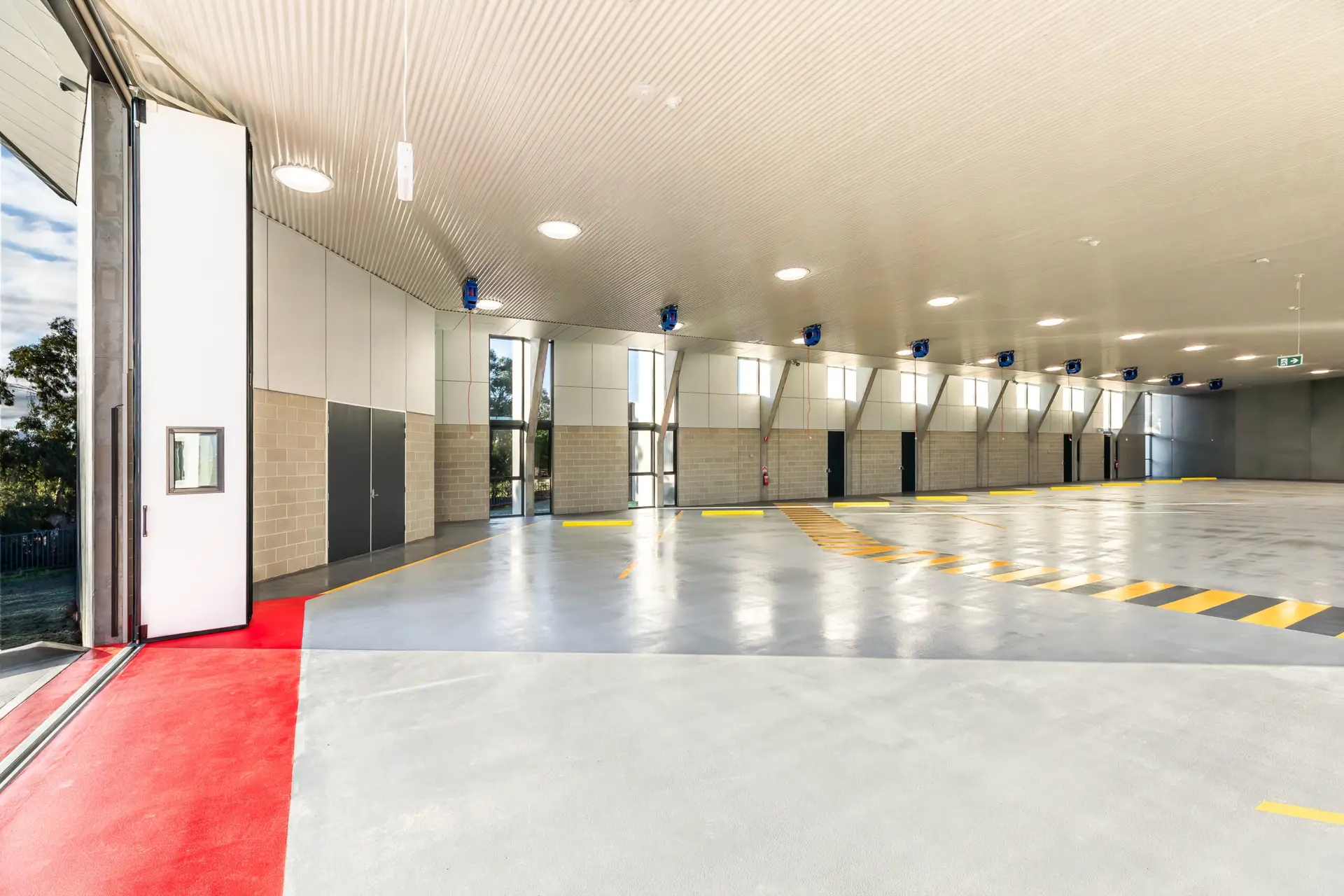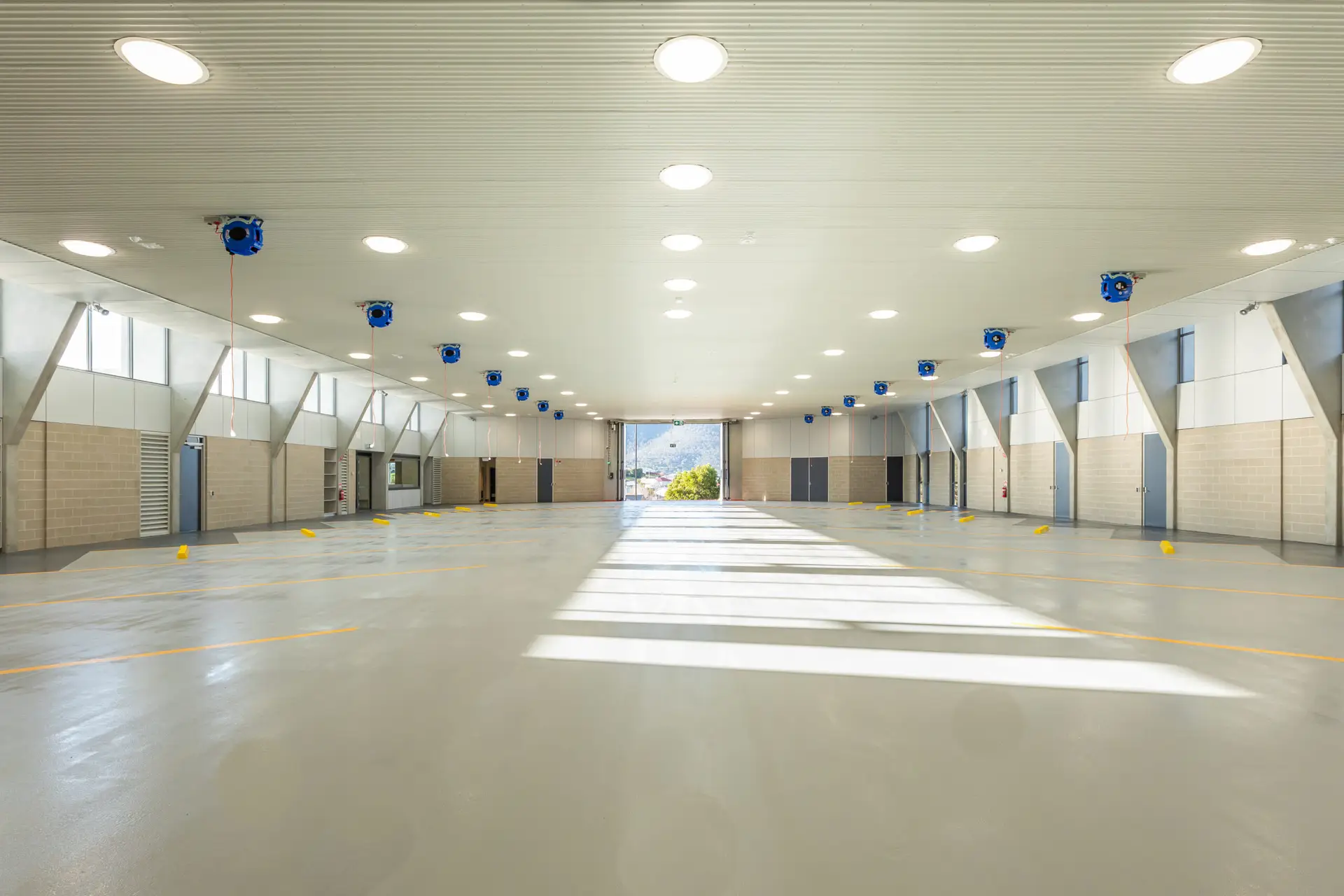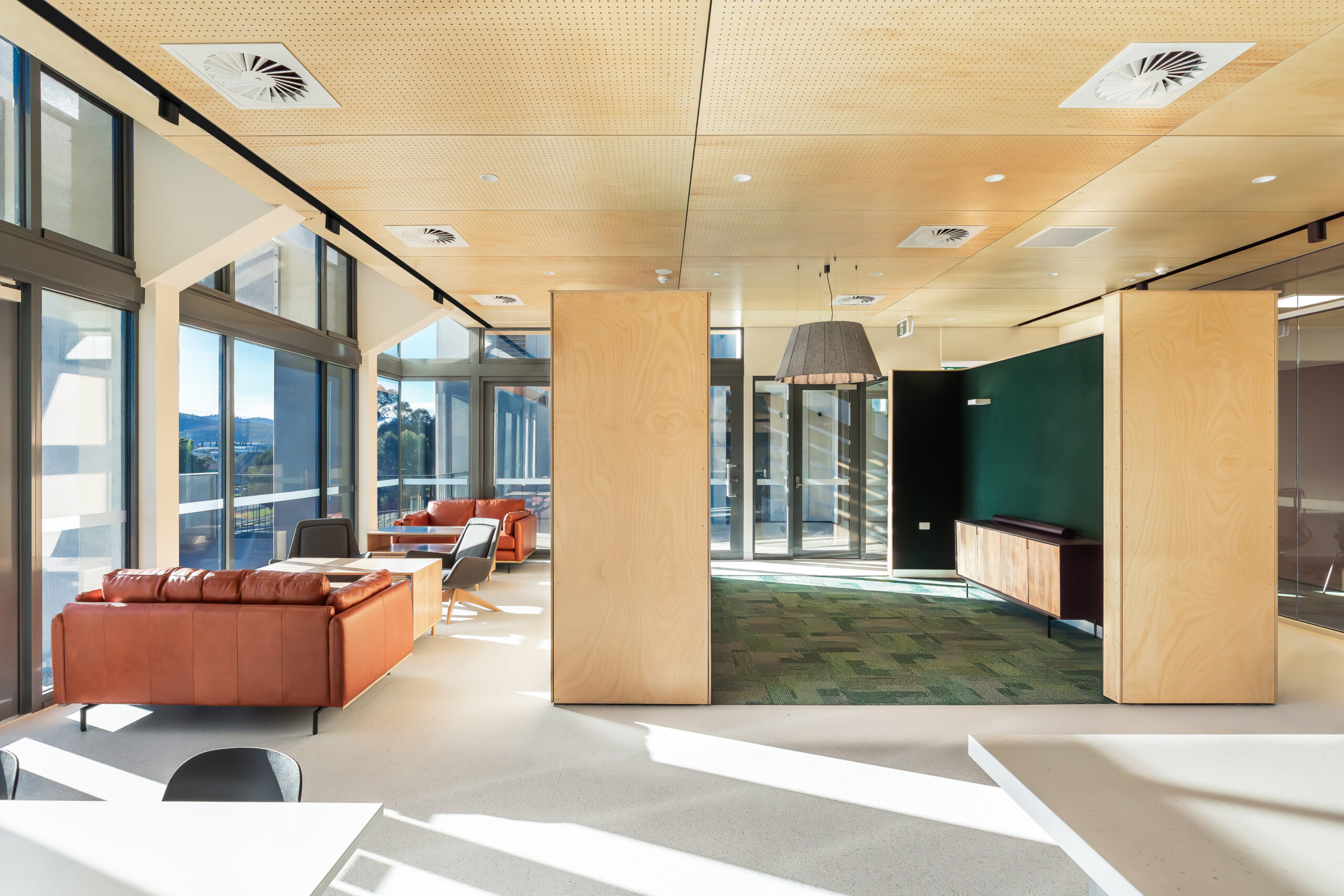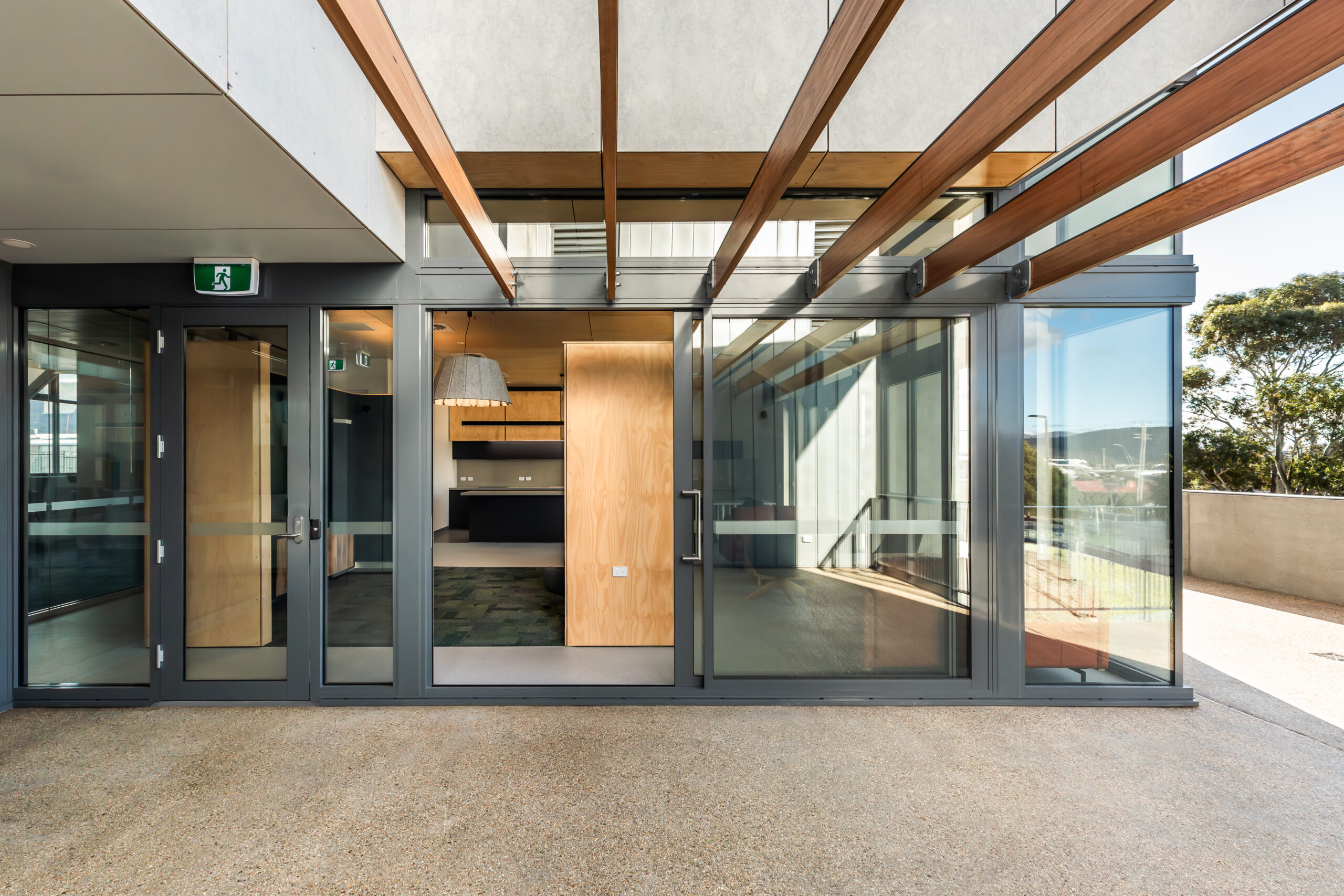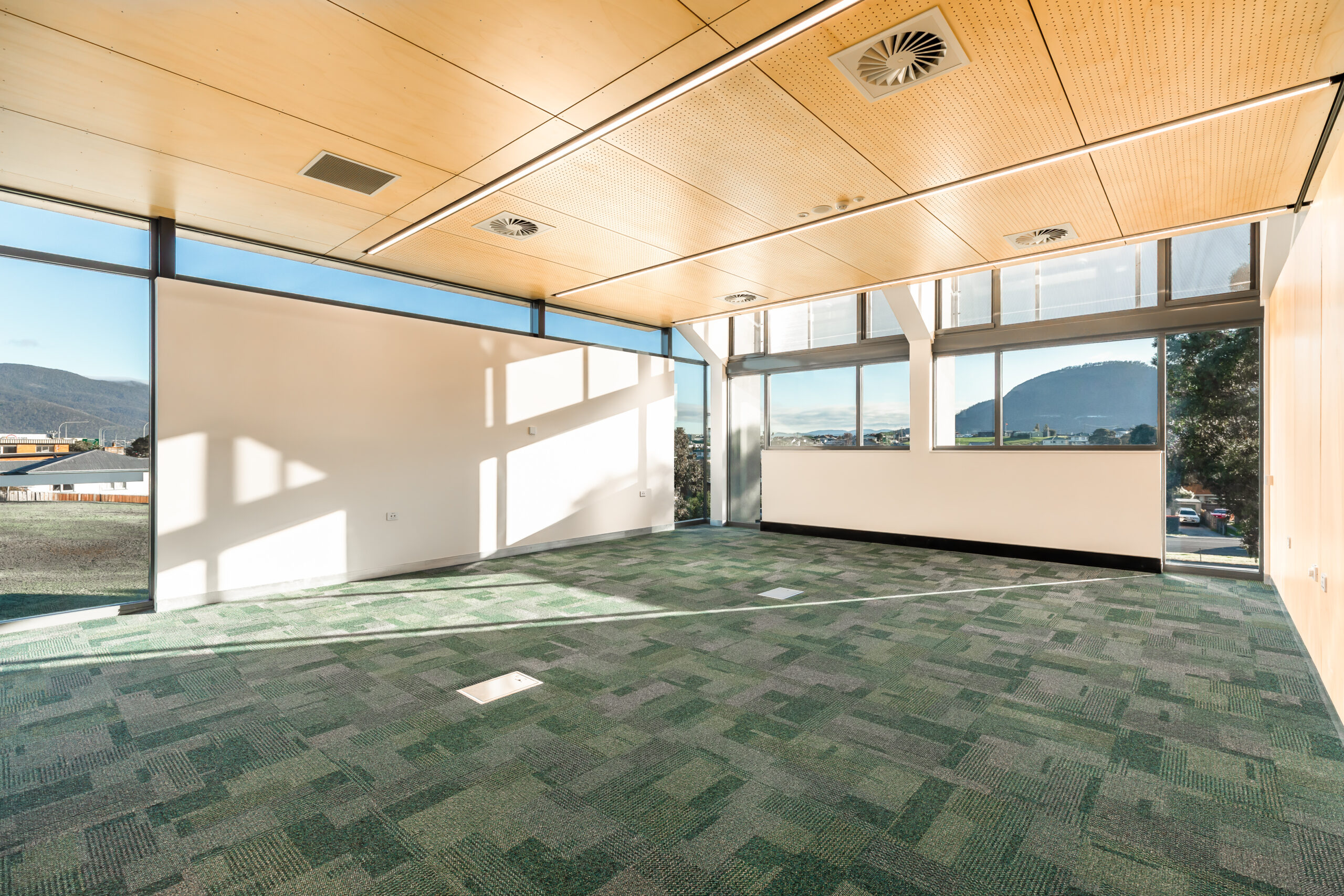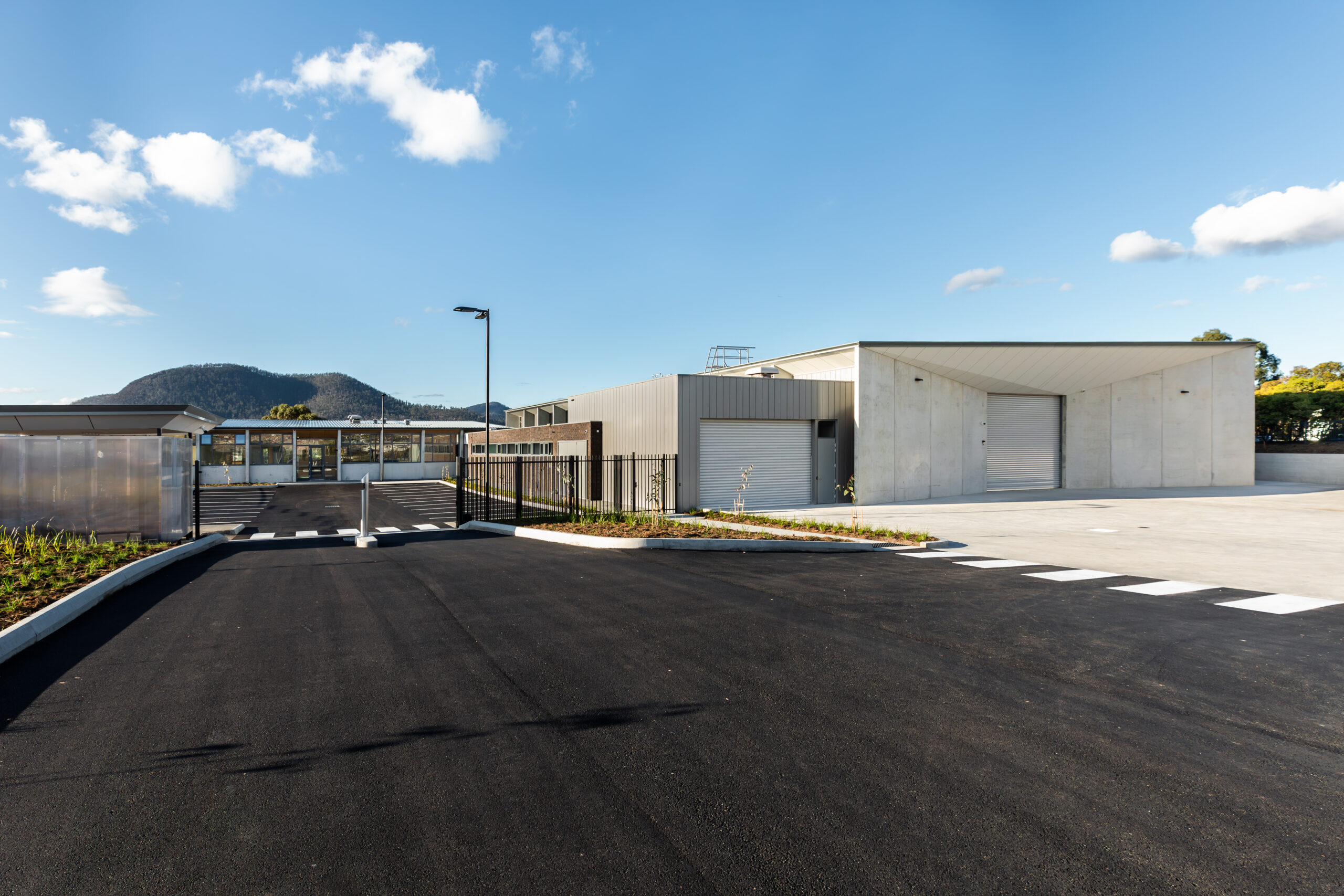GLENORCHY AMBULANCE STATION | MORRISON & BREYTENBACH ARCHITECTS
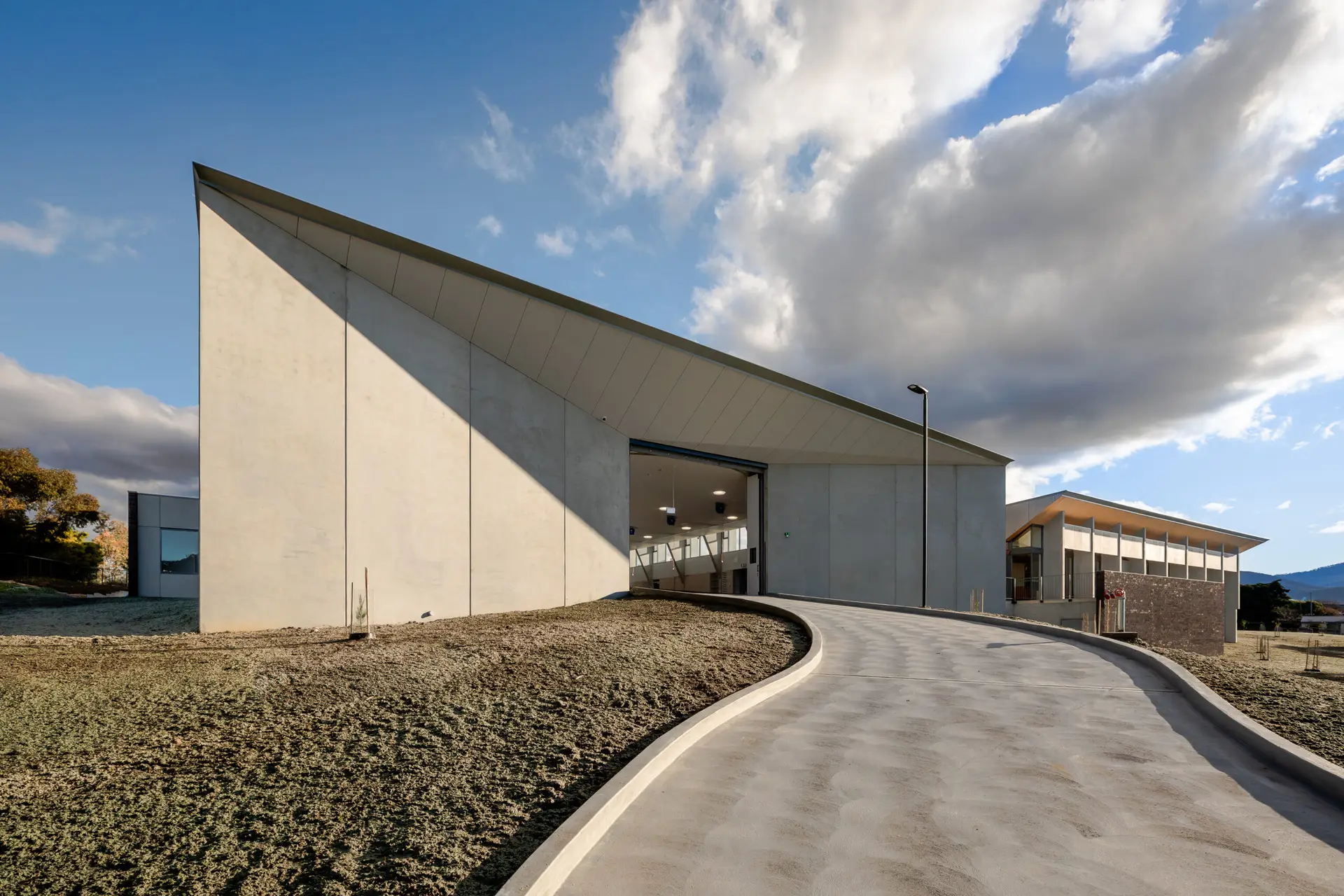
2025 National Architecture Awards Program
GLENORCHY AMBULANCE STATION | MORRISON & BREYTENBACH ARCHITECTS
Traditional Land Owners
Palawa people of Lutruwita
Year
Chapter
Tasmania
Category
Builder
Photographer
Media summary
The new Glenorchy Ambulance Station is a custom designed emergency services facility for Ambulance Tasmania (AT) for garaging 18 ambulances.
The design’s strong architectural form is prominent from the Brooker Highway and delivers a high-quality workplace environment for AT paramedics.
The station comprises a number of distinctive zones:
Administrative / training / paramedic
Offices and training rooms house administration and training programs. 24 hour pre- and post- incident stand-down areas with varied living spaces offer paramedics group or solitary activity options. Integrated passive solar design achieves thermal comfort and bright, uplifting, healthy interiors with views to surrounding hills connecting to Tasmania’s natural landscape.
Operational and cleaning
For management of incident mobilisation, personnel and ambulance return, isolation, decontamination, and rest areas. Careful planning supports the shortest possible response time and integrates lessons learnt from the Covid-19 pandemic.
The ambulance garage
Once re-garaged, ambulances are restocked, re-charged and made ready for the next deployment.
2025
Tasmania Architecture Awards
Tasmania Jury Citation
Glenorchy Ambulance Station exemplifies considered and purposeful public architecture, providing a high-quality workplace environment for Ambulance Tasmania workers. Structural ingenuity is a defining feature, with clerestory glazing strategically implemented in both the ambulance parking garage and workspaces to enhance natural light and create an uplifting atmosphere.
The interiors are thoughtfully composed, balancing durability with warmth to foster a sense of calm. Timber linings introduce a natural, tactile quality that softens the clinical nature of the medical environment while reinforcing resilience and practicality. Carefully selected colours further enhance the interior, creating an inviting and balanced workspace that prioritises wellbeing. The varied scale of spaces facilitates both group interaction and individual activities, ensuring that workers in highly demanding roles have environments that support both collaboration and respite.
The civic scale of the building is both necessary and appropriate, serving as a powerful symbol of investment in public health infrastructure. The logical and considered planning arrangement not only addresses current operational needs but also strengthens resilience for future pandemic responses.
This project demonstrates the critical role of architectural design in creating spaces that prioritise wellbeing for essential public service workers.
The new Glenorchy Ambulance Station delivers vastly improved facilities for Ambulance Tasmania in the northern part of Greater Hobart. The building provides a well-designed flow for cleaning, restocking, and preparing ambulances for response. The cleaning and decontamination facilities, in particular, have been carefully designed to incorporate lessons learned from the COVID-19 pandemic, and the design and layout supports the shortest possible ambulance turnout time. Morrison & Breytenbach Architects established a close working relationship with the client to deliver a building with a high quality finish, that well supports the users’ requirements.
Client perspective
Project Practice Team
James Morrison, Design Architect
Yvette Breytenbach, Assistant Design Architect
David Johnston, Project Architect
Project Consultant and Construction Team
pitt&sherry Engineering and Building Surveying, Building Surveyor
ALDANMARK Consulting Engineers, Structural Engineer
ALDANMARK Consulting Engineers, Civil Consultant
ALDANMARK Consulting Engineers, Hydraulic Consultant
ERA Planning & Environment, Town Planner
COVA, Services Consultant
NOISE VIBRATION CONSULTING, Acoustic Consultant
CASTELLAN CONSULTING, Fire Engineering
IPM CONSULTING, Workplace health and safety
WT PARTNERSHIP, Cost Consultant
pitt&sherry (Operations), Traffic Engineer
LINDSAY CAMPBELL LANDSCAPE SERVICES, Landscape Consultant
COVA, JV3 Energy Modelling
GES GEO-ENVIRONMENTAL SOLUTIONS, Geotechnical
